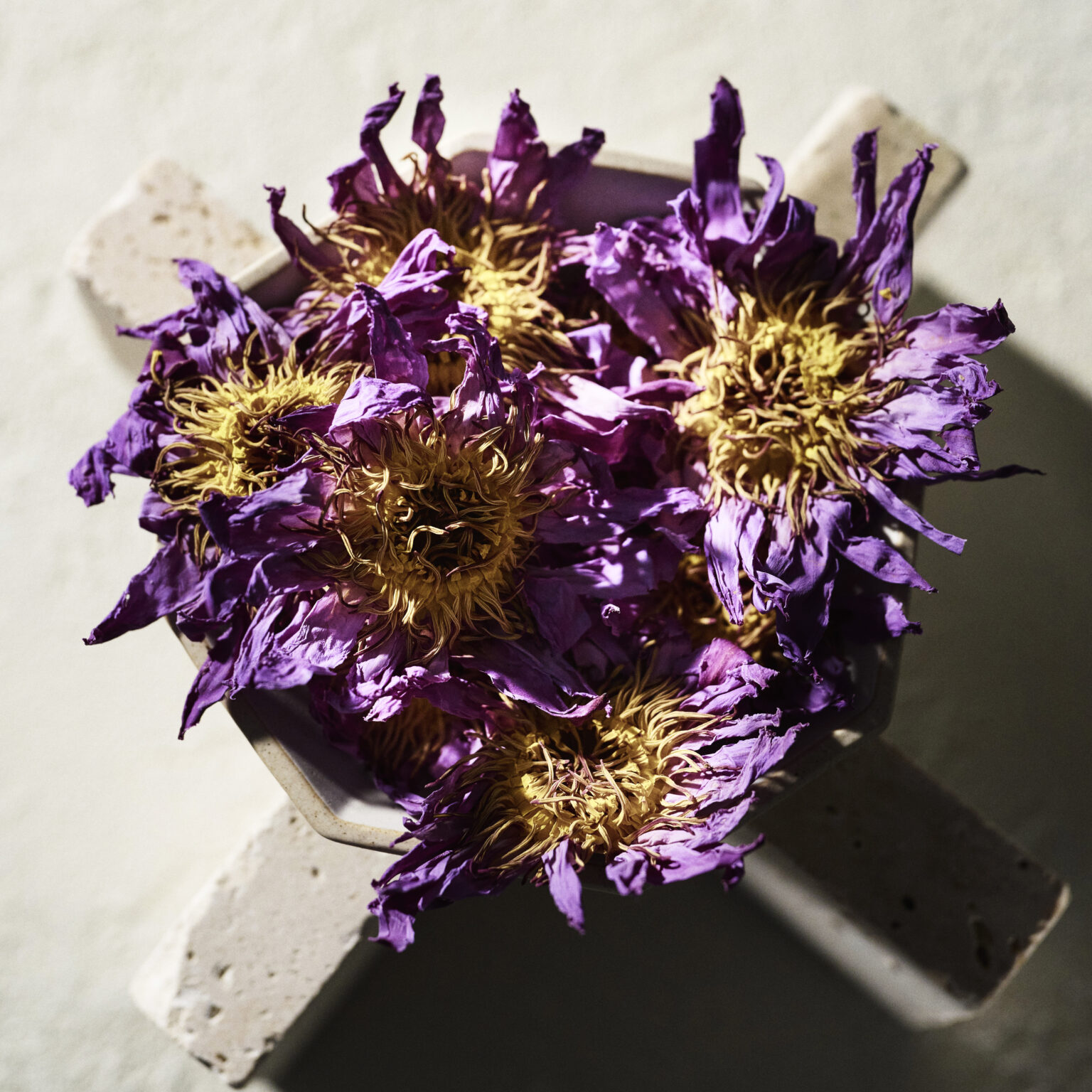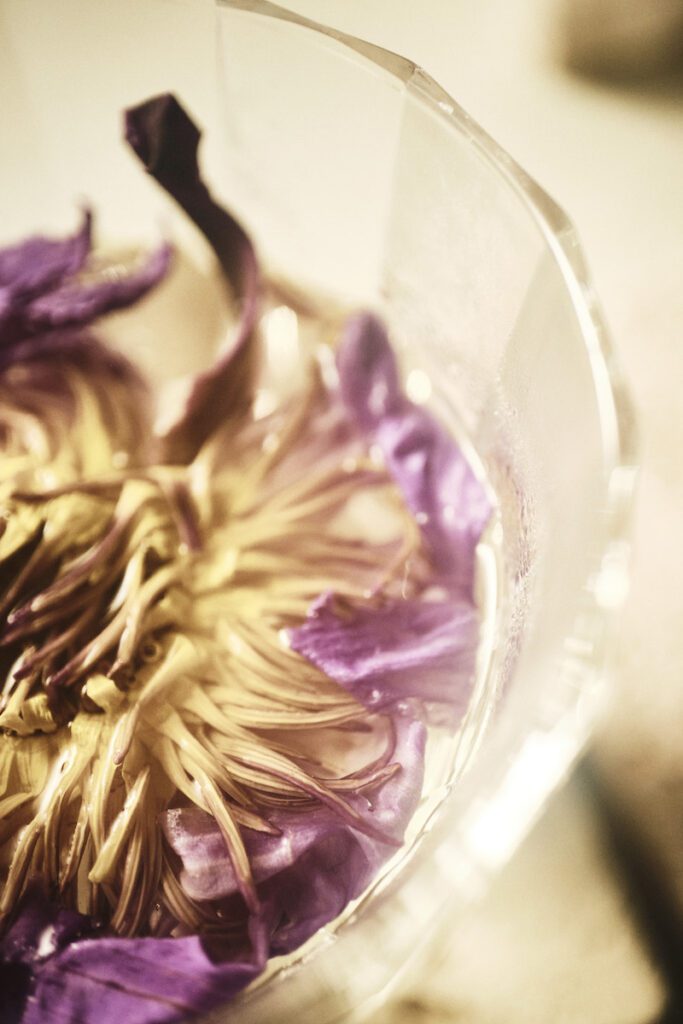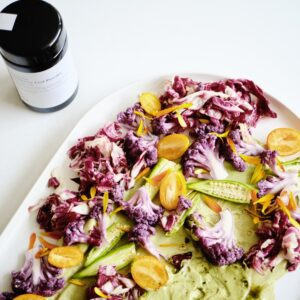
Mindful Herbal Practices for Balance, Rest, and Vitality – Before Biohacking was a thing
In our modern wellness landscape, “biohacking” often evokes images of

Kick-start, energise, rejuvenate
All carefully planned and prepared to help nourish, reset and rejuvenate the body and mind.

The Blue Lotus, scientifically known as Nymphaea caerulea, has captivated the human imagination for centuries and is celebrated as the “Flower of Enlightenment.” This sacred bloom is renowned for its intuitive, rejuvenating, and aphrodisiac qualities, earning a revered place in various cultures and traditions.
Blue Lotus is significant in ancient civilizations, particularly in Egypt, where it was cherished as a symbol of creation and rebirth. The Egyptians associated it with Nefertem, the god of healing and beauty, often depicted with a Blue Lotus crown. This flower adorned the tomb of King Tutankhamun, signifying its importance in funerary rites and its believed power to guide souls to the afterlife.
The plant’s influence extended beyond Egypt to the Greeks, the Tibetans, and even the Roman Empire. Its depiction of ancient monuments, temples, and papyrus scrolls highlights its cultural and spiritual significance. Despite its historical prominence, the Blue Lotus is rare in modern Egypt, sparking curiosity about its ancient cultivation.
Throughout history, the Blue Lotus has been shrouded in mystery and mysticism. The early Church hid it for over a millennium, only to rediscover it in the 19th century. The flower was often steeped in wine, believed to enhance its euphoric and mind-altering effects. This sacred elixir was used in religious ceremonies to reach higher states of consciousness and connect with the divine.
In Australia, traditional Aboriginal medicine has utilized the Blue Lotus, incorporating it into daily life and spiritual practices for thousands of years. This plant’s legacy is deeply rooted in ancient traditions, symbolizing enlightenment and spiritual awakening.
The Blue Lotus is celebrated for its wide range of medicinal properties. As a nervine and antispasmodic, it acts as a natural sedative, promoting relaxation and stress relief. Its calming euphoria makes it a popular choice for alleviating anxiety and enhancing mood.
The flower’s alkaloids, such as nucifera and aporphine, contribute to its reputation as a natural aphrodisiac and a remedy for erectile dysfunction. Additionally, it aids in digestive health, treating gastrointestinal issues and soothing the body.
While some may wonder about its psychoactive properties, typical consumption of Blue Lotus, such as in tea, does not produce such effects. Instead, it provides a gentle, adaptogenic experience, offering the body’s needs.
Incorporating Blue Lotus into daily rituals can enhance well-being and spiritual growth. Whether through tea, meditation or dream journaling, this flower invites us to explore deeper connections with our subconscious and the universe. As a symbol of enlightenment and rejuvenation, the Blue Lotus continues to inspire and heal, bridging ancient wisdom with contemporary practices.
By embracing the Blue Lotus, we honour a timeless legacy of healing, spirituality, and connection to the divine. How might you integrate this sacred flower into your wellness journey?

How to make Blue Lotus tea
Making Blue Lotus tea is a simple yet delightful process that allows you to enjoy this ancient flower’s calming and euphoric effects. Here’s a step-by-step guide to brewing your own Blue Lotus tea:

In our modern wellness landscape, “biohacking” often evokes images of

If you’re looking for a natural way to support blood

Despite growing threats to our well-being, the human longing for
Copyright Shoku Iku © 2024 | All Rights Reserved.
The statements on this website have not been evaluated by the TGA or FDA. These products are not intended to diagnose, treat, cure or prevent any disease.
Sign up to receive your discount.